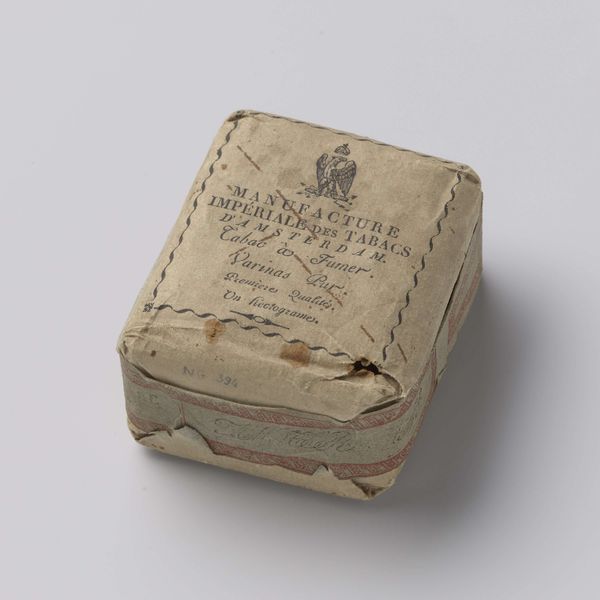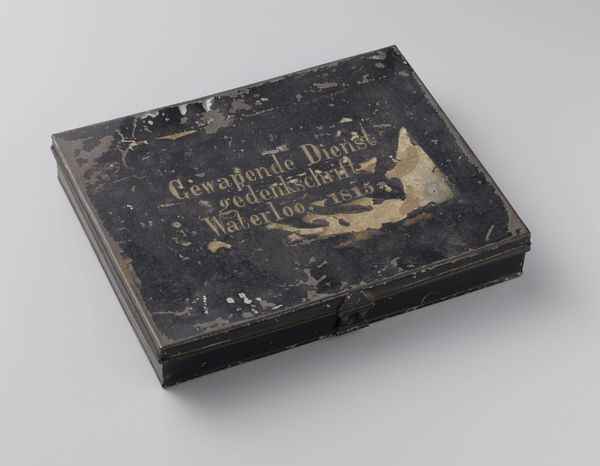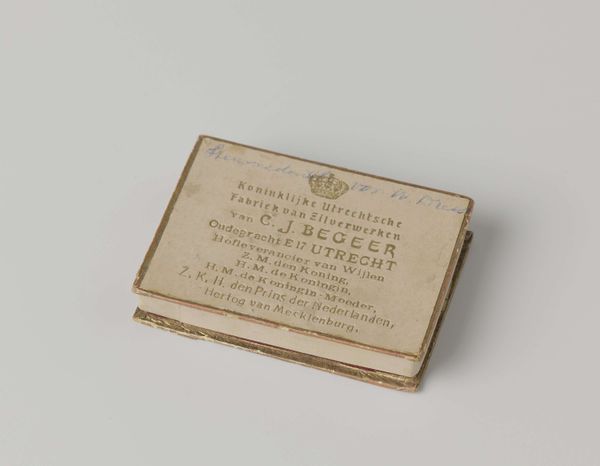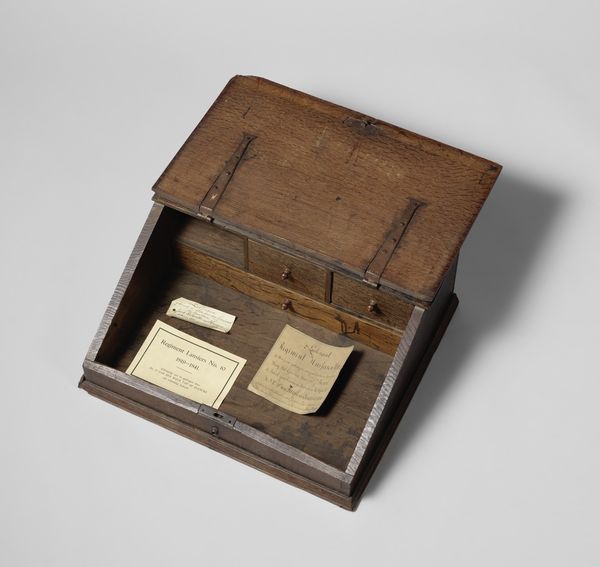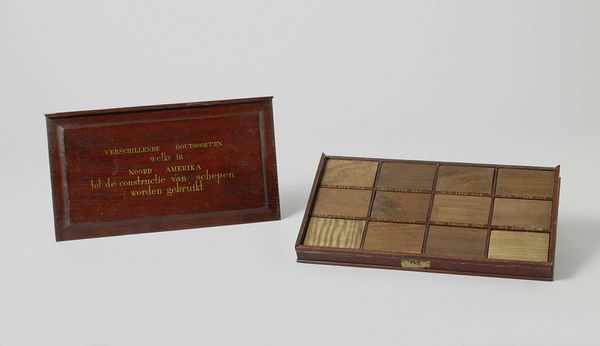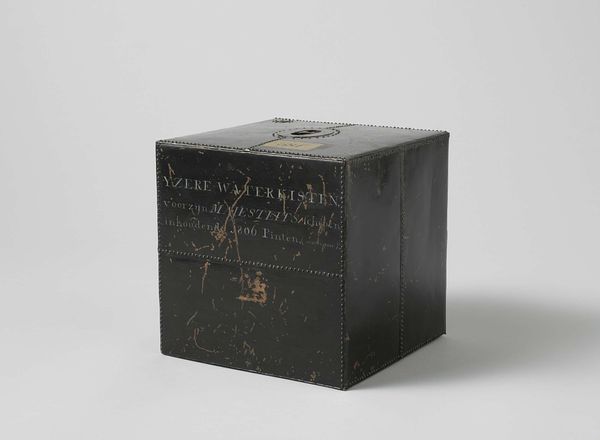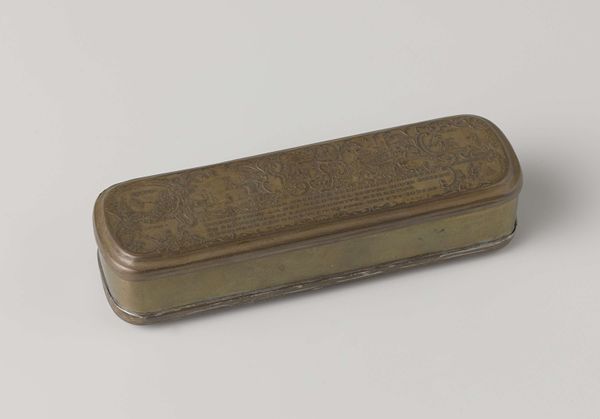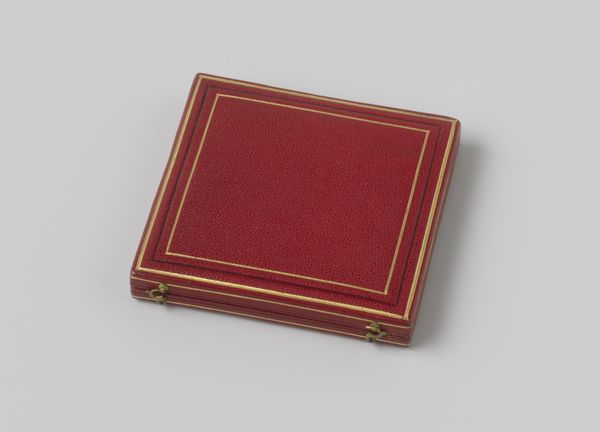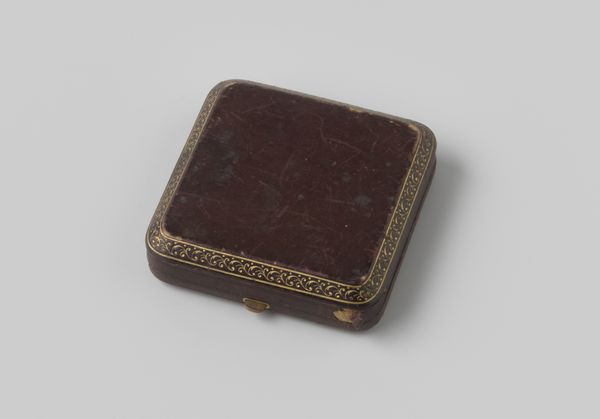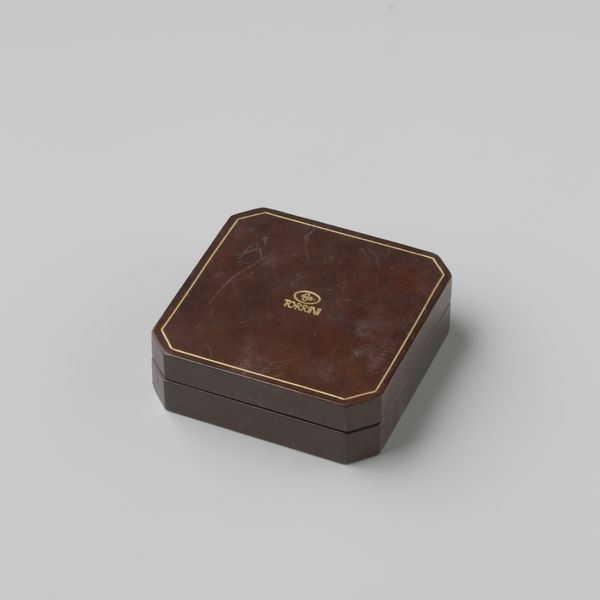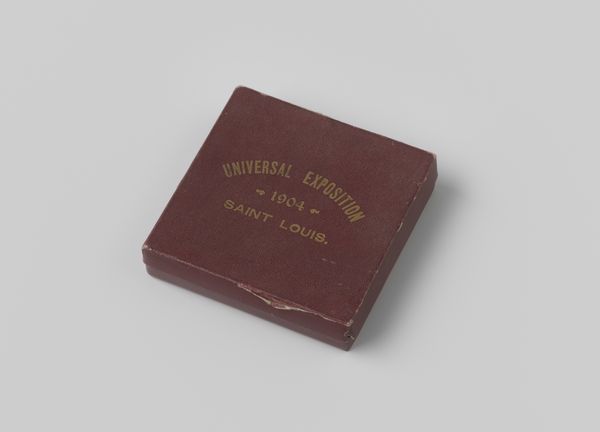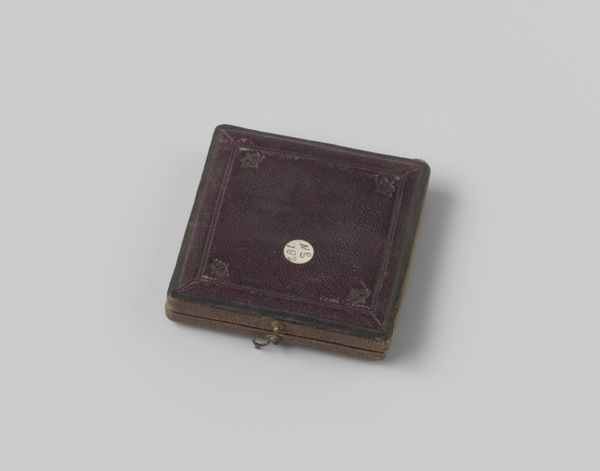
Doosje behorend bij penningen van de opening van het Kanaal van Terneuzen naar Gent 1827 1827
0:00
0:00
photography
#
studio photography
#
advertising product shot
#
product studio photography
#
product shot
#
presentation design mockup
#
photography
#
product design photgrpaphy
#
product mock up
#
graphic design product photography
#
product photography
#
retail photography
Dimensions: length 10.4 cm, width 6.2 cm, height 1.6 cm
Copyright: Rijks Museum: Open Domain
Curator: Oh, look at this charming little box! It has a rather regal air to it, doesn't it? Editor: It does give off a certain sense of restrained power. Curator: This, friends, is the "Doosje behorend bij penningen van de opening van het Kanaal van Terneuzen naar Gent 1827," created back in 1827. Quite a mouthful! Editor: More importantly, this piece represents the kind of commemorative ephemera connected to colonial projects and infrastructural interventions meant to consolidate power during that era. What do you feel when you look at this? Curator: Immediately I sense a somber, yet oddly vibrant tone, especially with that rich red against the muted gold trim. It's petite, holding secrets… or perhaps just waiting to tell a story of celebration, however problematic the celebration might be from our current perspective. I imagine the box whispers of empires and hidden legacies. Editor: And yet, the gold lettering – naming the "Minister for Marine and Colonies" - hints at more overt power structures at play. You can't celebrate a canal without acknowledging the labor and geopolitical landscape that allowed its creation. Whose freedom did this canal enable, and whose did it restrict? Curator: Exactly! It feels less like a piece of craftsmanship and more like a physical embodiment of governmental pride, wouldn’t you say? A quiet but bold assertion of dominion, disguised as civic progress. And such delicate hinges—do you suppose they still work perfectly after all this time? I have a romantic imagination of lost treasure maps being secreted inside. Editor: And, by treasure, we’re ultimately talking about the profits extracted through colonial enterprises facilitated by these infrastructures, like the Terneuzen-Ghent canal. This box, as unassuming as it appears, quietly exposes that complex narrative of ambition and exploitation, neatly packaged for posterity. It almost feels complicit. Curator: It’s uncanny, isn’t it? Something seemingly innocuous speaking volumes about entire power systems! What a story in miniature. Editor: Ultimately, this piece challenges us to ask questions about the relationship between physical progress and ethical costs—relevant both then and now. Curator: Well said! Indeed, food for thought presented in a delightful, albeit uneasy, package.
Comments
No comments
Be the first to comment and join the conversation on the ultimate creative platform.
